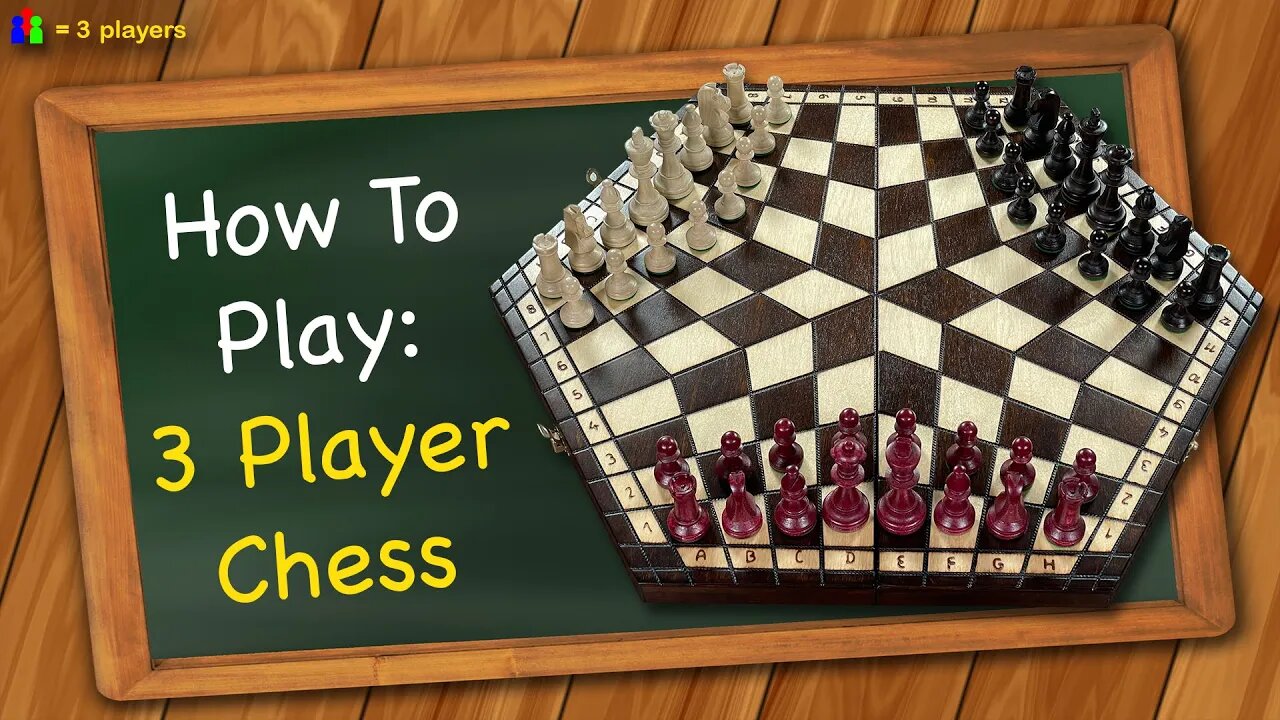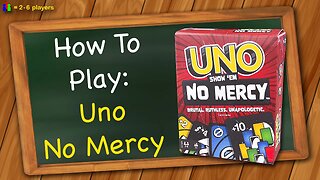Premium Only Content

How to play 3 Player Chess
Learn the rules to 3 Player Chess quickly and concisely - This video has no distractions, just the rules. For a refresher of the original Chess rules, check out this video: https://youtu.be/fKxG8KjH1Qg
Don't own the game? Buy it here:
USA - https://buy.triplesgames.com/3PlayerChess
Canada - https://buy.triplesgames.com/CA3PlayerChess
UK - https://buy.triplesgames.com/UK3PlayerChess
(These Amazon Affiliate links directly supports me)
RULES:
Setup the red pieces on the “A” through “H” side. White on the “A” through “L” side. And black on the “H” through “L” side. Red goes first, then play proceeds clockwise with White, followed by black.
When you move pieces, use their normal movement relative to the adjacent spaces as the space shapes distort. When you move a piece through the center rosette, movement changes significantly.
A diagonal movement traveling into the center, will continue out of either rosette of the same color, on the other side, in a straight line through the opposite corner of the space it entered. A diagonal movement across the side of the rosette, will deflect the movement outward away from the center through the opposite corner of the space it entered.
Spaces opposite each other in the rosette of different colors are not connected. A queen may not travel diagonally through the center of the rosette so that it continues in the diagonal of a different color. Likewise, when the King is on a rosette, it may not move to the opposite side of the rosette to the space of the other color. However, it may move to any other adjacent space.
A horizontal movement always deflects away from the center at the largest angle. A rook may not travel towards the center and continue on a path that changes its relative direction. It must travel through the opposite lateral edge of the space it entered. A rook starting on a rosette space cannot move across a rosette towards the other side of the board, but instead, it may only move through the opposite lateral edge of the space it entered.
When a pawn is in a rosette, its forward movement is always towards its closest opponent’s side of the board. A pawn in the rosette may capture diagonally to another rosette of the same color, but may not capture to a rosette of the opposite color. If a pawn reaches the back row of either opponent’s side of the board it is promoted.
A knight may never travel across the center point of the rosette but instead travels around it, using adjacent spaces for it’s “L” movement, keeping in mind that a straight line moves through the opposite lateral edge of the space it entered.
There are 3 game ending variations you can play with, you should agree which you will play before beginning. Option 1: The game continues until one player is checkmated. Then the player who delivered the checkmate is the winner.
Option 2: After the first king is captured, that player is eliminated from the game and the game continues. The player who delivered the checkmate receives the bonus ability of being able to use the eliminated player’s pieces until only 1 player remains.
Option 3: When player is checkmated, that player is eliminated from the game but all their pieces remain on the board. These pieces do not move, they cannot check a king, and you may not pass a piece through them. If you wish to occupy a space with an eliminated player’s piece on it, then you must capture that piece. The game then continues until only 1 player remains.
-
 3:22
3:22
Triple S Games
1 year ago $0.18 earnedHow to play Uno No Mercy
525 -
 6:34:50
6:34:50
SpartakusLIVE
11 hours ago#1 Saturday Spartoons on RUMBLE PREMIUM
110K7 -
 1:04:59
1:04:59
Man in America
11 hours ago“Summoning the Demon” — The AI Agenda Is FAR WORSE Than We Know w/ Kay Rubacek
46.5K33 -
 2:16:48
2:16:48
Tundra Tactical
9 hours ago $0.11 earned🎯💥 The World’s Okayest Gun Show 🔫😂 | LIVE Tonight on Rumble!
31.3K -
 3:36:03
3:36:03
Mally_Mouse
1 day ago🌶️ 🥵Spicy BITE Saturday!! 🥵🌶️- Let's Play: Tower Unite!
53.6K2 -
 58:59
58:59
MattMorseTV
9 hours ago $1.61 earned🔴Trump just BROKE Newsom.🔴
68.3K85 -
 18:14
18:14
Her Patriot Voice
9 hours agoWho Is WORSE for NYC: Trump Girl or Socialist?
51.1K34 -
 3:39:42
3:39:42
SavageJayGatsby
9 hours agoSpicy Saturday with Mally! | Road to 100 | $300 Weekly Goal for Spicy Bites!
49.2K1 -
 3:35:50
3:35:50
FomoTV
11 hours ago🚨 Swamp Theater: FBI Raids Bolton 🕵 Still NO Epstein Files, Trump's Troops & the Red Heifer Hoax 🐂 | Fomocast 08.23.25
23.9K7 -
 6:04:40
6:04:40
Akademiks
14 hours agoRoc Nation & Meg Thee Stallion did a 7 HOUR Deposition with me. Drake Secret Kid Finally Revealed.
58.7K2